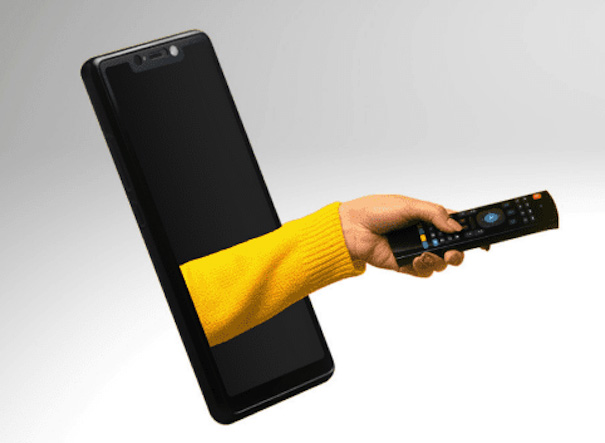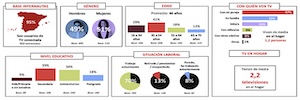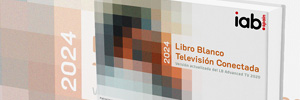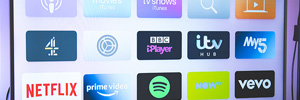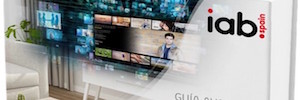27,4 millones de españoles consumen ya contenidos audiovisuales vía Internet
Según el Estudio de Televisión Conectada 2022 de la Asociación de Publicidad, Marketing y Comunicación Digital en España (IAB Spain), la Televisión Conectada consigue mayor penetración en el target joven, alcanzando un 87% (de 16 a 30 años) y un 85% (de 31 a 50 años).
Este estudio, que cuenta con el apoyo de Kantar and Konodrac y ha sido elaborado por Elogia, analiza aspectos claves de la TV Conectada como sus oportunidades de negocio, los hábitos de consumo, las diferencias de uso entre TV Conectada y TV No-Conectada o la penetración de la Smart TV en los hogares españoles. También incluye la visión de los profesionales del sector en cuanto a inversión, modelos de compra y comercialización del formato, entre otros temas.
El 82% de los internautas de 16-75 años accede a contenido audiovisual de TV a través de Internet independientemente del dispositivo de acceso (Smart TV u otros dispositivos), lo que representa 27,4 millones de individuos. Aunque la penetración promedio alcanza un 82%, el perfil de edad con mayor penetración es el joven 87% (de 16 a 30 años) y 85% (de 31 a 50 años).
6 de cada 10 internautas ven contenidos audiovisuales a través de su Smart TV. Un 49% accede a la TV Conectada con un dispositivo distinto a la Smart TV (Set Top Box, Smartphone, Ordenador portátil/sobremesa, Consola o Tablet).
Hábitos de consumo
Los usuarios de TV Conectada cuentan con 2,3 televisores en el hogar de 40 pulgadas de media, mientras que los no usuarios de TV Conectada cuentan con menos televisores (1,9) y de menor tamaño (37,8 pulgadas).
Los informativos se consumen de forma similar entre usuarios de TV Conectada y los no usuarios. Los usuarios de TV Conectada destacan por su consumo de cine, series extranjeras y nacionales, deportes y eventos en directo. Ambos targets ven la televisión en compañía de otros adultos (destacan los de 31 a 50 años y 51 a 75 años) dedicando, en su mayoría, de 1 a 3 horas.
The media de consumo en minutos es mayor en TV Conectada (138min) que en TV No Conectada (124min). El momento de consumo es el prime time, independientemente del perfil y del dispositivo. Los momentos preferidos también son los mismos para ambos usuarios: antes de acostarse, durante la cena y durante la comida.
Los usuarios de TV Conectada consumen, en mayor proporción, otros dispositivos cuando ven TV: 55% de los usuarios de TV Conectada vs. 38% de los usuarios de TV No Conectada, siendo el Smartphone el dispositivo elegido para ambos.
Advertising
Las plataformas más utilizadas son: Netflix, YouTube, Amazon Prime Video, HBO, Disney+, Movistar Plus+, AtresPlayer y Mitele. YouTube (88%) y Mitele (81%) son las plataformas de TV Conectada donde más publicidad se consume, y YouTube se posiciona como la plataforma en la que los usuarios estarían más dispuestos a ver publicidad a cambio de ciertas ventajas (69%).
En este sentido, los principales drivers para ver más publicidad son un menor precio mensual de suscripción, ofertas de servicios gratuitos y que la publicidad no corte escenas importantes. Según revela el estudio, la publicidad se tolera mejor en plataformas gratuitas (4,2/10) que en plataformas de pago (1,5/10).
El 63% de los profesionales del sector tienen una planificación de medios o inversión específica para TV Conectada. Un 75% percibe en su compañía, o entre los clientes que gestiona, interés
por las ventajas competitivas de la TV Conectada como medio publicitario para llegar a los consumidores.
Entre los principales motivos por los que los profesionales usan TV Conectada destacan que es medible y su ROI se puede determinar, que permite adelantarse a la competencia en acciones innovadoras y que presenta los mismos beneficios que la TV no Conectada.
La necesidad de disponer de medios que garanticen alta cobertura se posiciona como el principal freno. No obstante, tener un mayor conocimiento sobre las posibilidades que ofrece y disponer de un experto en la empresa animaría a los profesionales a invertir más en TV Conectada.
The gestión del presupuesto publicitario en TV Conectada se gestiona principalmente mediante el departamento de TV (31%) y digital (29%). Además, 9 de cada 10 utilizan el modelo de compra/venta programático. Las métricas que más confianza generan son el porcentaje de visionado (49%) y la frecuencia (44%). FAST (36%), AVOD (35%), TVOD (33%) y SVOD (33%) se posicionan como los modelos de comercialización de TV Conectada más conocidos.
Gustavo Núñez, director general para el sur de Europa de Media Division de Kantar, señala que “hay que entender bien este nuevo contexto de digitalización y fragmentación de medios y dispositivos. Por ello, herramientas de medición audiovisual más digitales se hacen necesarias en un hogar donde la televisión sigue siendo el epicentro del entretenimiento y ocio. Esa es la CTV, y nos va ayudar a generar un nivel de granularidad y detalle a nivel de medición clave para conocer lo que pasa dentro de los hogares”, señala Gustavo Núñez, director general para el sur de Europa de Media Division de Kantar”.
Acceso al Estudio de Televisión Conectada 2022, here.
Did you like this article?
Subscribe to our NEWSLETTER and you won't miss a thing.



